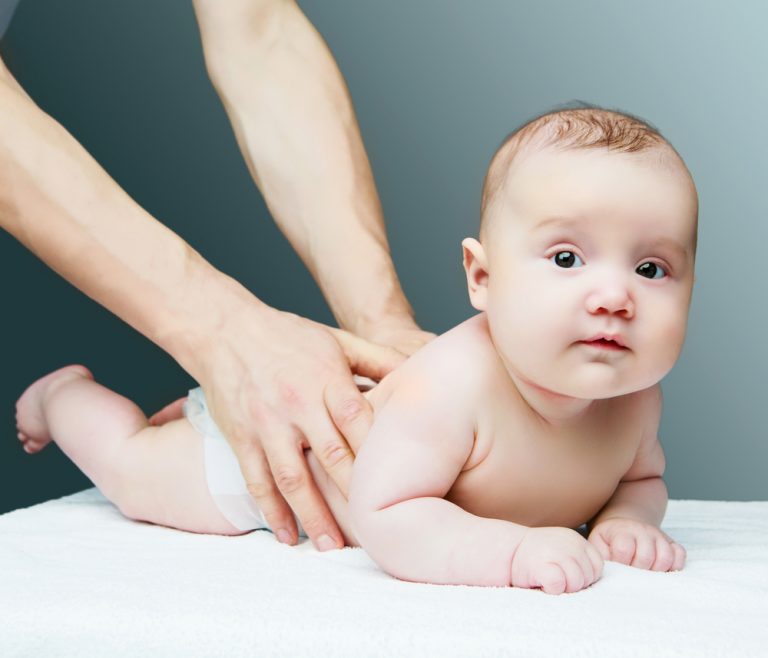How to Add Massage to Your Baby Daily Routine
May. 22, 2019Hits:16696
How to Add Massage to Your Baby Daily Routine
Infant massage is wonderful to add to daily routines with your baby as this loving touch may have many benefits for you both.What benefits do babies receive from massage?
1. Interaction
Massaging your baby promotes bonding. It contains every element of the bonding process. Infant massage promotes a secure attachment with your child over time. It promotes verbal and nonverbal communication between the two of you. Your baby receives undivided attention from you. He feels respected and loved. It is one of the only times that all of his senses are nourished.2. Stimulation
Infant massage aids in the development of your baby’s circulatory, respiratory, and gastrointestinal systems. It aids in sensory integration, helping your baby learn how her body feels and what its limits are. Massaging your baby helps make connections between neurons in the brain, which helps develop her nervous system. It also aids the generation of muscular development and tone, and contributes to her mind-body awareness.3. Relaxation
Regular infant massage improves sleep, increases flexibility, and regulates behavioral states. It reduces stress and stress hormones and hypersensitivity. Massaging your baby creates higher levels of anti-stress hormones and promotes an improved ability to self-calm. Because we use a kind of “conditioned response” called touch relaxation, it teaches your infant to relax in the face of stress and upon the voice and touch of parents.4. Relief
Infant massage helps with gas and colic, constipation and elimination, muscular tension, and teething discomfort. It also helps with “growing pains,” organizes the nervous system, relieves physical and psychological tension, and softens skin. It helps release physical and emotional tension, balances oxygen levels, and provides a sense of security.5. Family Dynamic
Infant massage encourages the involvement of siblings and extended family in baby care. It promotes a relaxed environment in the home, communication, and respect.6. Societal Change
Imagine a world where people are trained to be good parents…where newborns, older babies, toddlers, and children were routinely given healthy, loving massages every day…where the entire culture valued positive, nurturing touch, respect, and empathy. There would be reduced infant health care costs, reduced child abuse, reduced behavioral problems in children, and reduced violence. When I founded the International Association of Infant Massage, this is what I imagined: changing the world, one baby at a time.
Tips and techniques on how to massage your new baby
You’re ready to massage baby, but what exactly are you supposed to do? Just follow a few simple steps:
1. Set the mood
Dim the lights, shut off your phone, turn on some soft music if you’d like, and make sure the room is warm. What’s considered warm? About 75 degrees F.2. Place baby on a safe surface
Choose a comfortable, but flat surface. This may be a floor, your bed (don’t leave baby unattended!), or baby’s changing table.3. Undress baby
You can ditch the diaper if you want. A little air time will even be beneficial for baby’s bum if she has a diaper rash or heat rash. Just be sure to slide a towel or two under baby if they are diaper-free. The prefold inserts for cloth diapers work well in this situation.4. Gentle touch
Now is not the time for tickling. You want a calm, peaceful mood. For small infants, use soft, gentle strokes. For toddlers, you can use more firm “massage” strokes. Think of a massage stroke as smoothing your baby’s skin, rather than rubbing it.5. Target the right body parts
Massage baby’s feet using soft, gentle strokes.Massage baby’s legs, working the shins and the thighs.
Move to the arms, making sure to massage baby’s hands, too.
For baby’s stomach, massage in a clockwise direction (the same way as baby’s digestive system moves).
Massage baby’s chest, but avoid the delicate head and neck area.
Flip baby over and massage his/her back.
*Avoid massaging the head since your baby still has soft spots
6. Bond with your baby
Talk softy, sing a lullaby, or gently shhhhh your baby. Look baby in the eyes to enhance the connection between the two of you.7. Know when to stop
If baby starts to fuss, stop the massage and resume at a later time. Common reasons why babies start to fuss during a massage is that they are hungry, too cold, or even bored. Hey, babies are human too!A Note About Infant Massage
There’s no denying that some of these benefits are pretty amazing, but take your child’s lead. If he/she doesn’t like the massage, just stop for now; you can try again when baby is less fussy. The most important thing to do is keep it really simple—baby massage doesn’t have to be perfectly executed to be effective. Just be safe, have fun, and enjoy bonding with baby!


 Language
Language